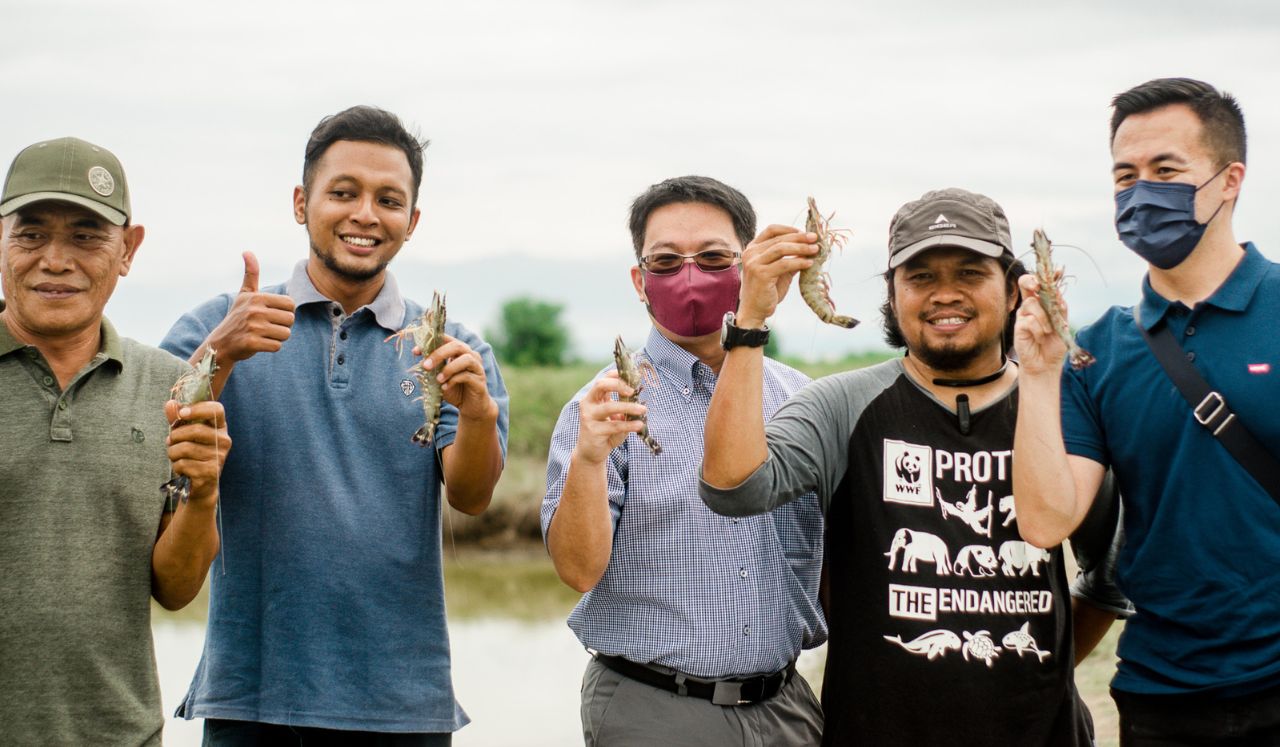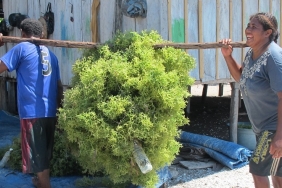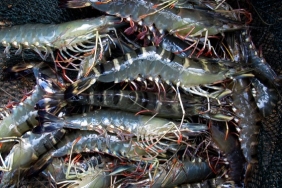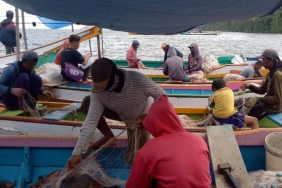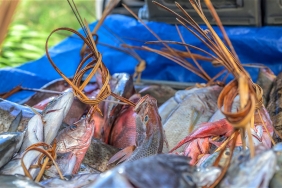TIGER SHRIMP FARMING BMP GREETS NORTH ACEH FARMER EXTENSION WORKERS
By Aquaculture Team
Tiger shrimp are not only large, but also have a high selling price in national and international markets. Aceh Province is one of the few regions in Indonesia that still consistently produces tiger shrimp using traditional pond systems, with a total production of more than 5,000 tons in 2011. (data source: Center for Data, Statistics and Information - KKP). One of the areas in Aceh Province that holds potential for tiger shrimp farming is in North Aceh District.
Traditional system in tiger shrimp farming means low stocking density of tiger shrimp fry, about 1 - 3 fry per square meter, and treated without feed and aeration (waterwheel). Semi-intensive means a stocking density of 3-10 tiger shrimp fry per square meter and feed but no aeration. To maximize the potential of Aceh, WWF-Indonesia through the Better Management Practice (BMP) of Tiger Shrimp Aquaculture is present to foster farmers there. Located in Room 1 of the Tgk. Hasbi Ash Shiddieqy Building on April 16, the tiger shrimp farming BMP training was held. Attended by extension workers from the Food Security and Extension Agency (BKPP), the North Aceh District Marine and Fisheries Service (DKP) and the Aceh Provincial DKP.Local leaders were also invited to assist farmers in several sub-districts such as Seunuddon, Lapang, Muara Batu, Samudera, Lhoksukon, Tanah Jambo Aye, Lancang Barat, Tanah Pasir, Syamtalira Bayu, Syamtalira Aron.The tiger shrimp farming BMPs developed by WWF also refer to the international standards of the Aquaculture Stewardship Council (ASC).
The training presented by Wahju Subachri, Senior Officer Aquaculture Program, talked more about good tiger shrimp farming, starting with the important aspects of shrimp farming, namely land and water preparation, fry selection, water quality sorting, disease control, and harvesting. "WWF-Indonesia does not recommend farmers to open new land. This is because almost all land in Indonesia is already open, especially mangrove forests. However, if conditions are urgent and require land to be opened, farmers must consult with the relevant agencies to identify which land can and cannot be opened," said Wahju Subachri.
Agus Salim, a local figure who is also the North Aceh District extension coordinator entrusted with overseeing the sub-districts to realize sustainable and responsible aquaculture, said "This activity is very useful, after this activity our confidence is higher and knowledge increases. We want to directly demonstrate what we learned in this socialization, so that when we go to the community, we know how to adopt good and appropriate BMPs that can be applied by the community and can be used as a reference." So far, North Aceh Regency has not been touched by programs that can help the welfare of coastal communities, especially farmers and fishermen. Most of them do not know how to breed fish, cultivate it well so that it has high economic value. The community hopes that WWF-Indonesia can bridge the extension workers and fish farmers to maximize production and create sustainability.

